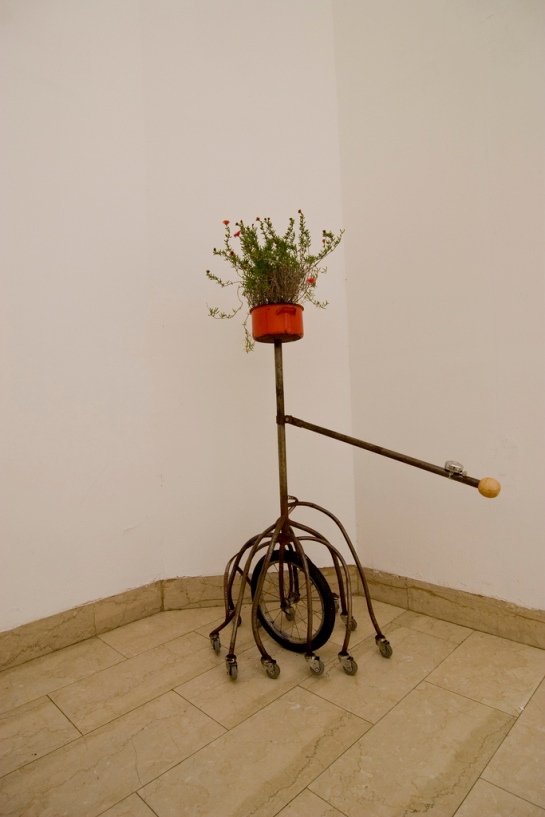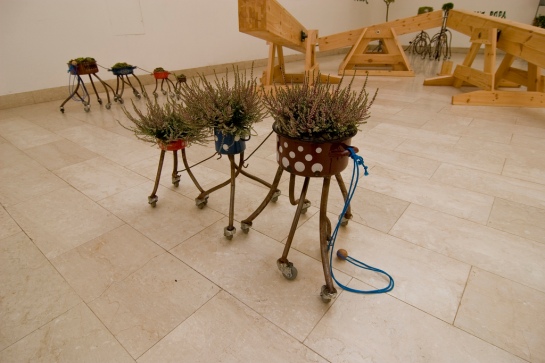A few years ago, the landscape architecture office CMG was asked by a group of citizens to create a special garden in a precise area of the neighborhood. With the project Crack Garden, they created a green space from an area mainly made out of concrete, by removing some strips, cracking the material with a hammer drill and leaving this way only the naked ground of soil. Then, various type of flowers, herbs and vegetables were planted in these strips. This is how the authors explain the project:
The Crack Garden is a hostile takeover of a concrete urban backyard by imposing a series of jackhammer “cracks.” Inspired by the tenacious plants that pioneer the tiny cracks of the urban landscape, the formal rows of this garden create order amongst the random and mixed planting of herbs, vegetables, strange flowers and rogue weeds.
Images taken from www.cmgsite.com
Crack Garden reminds us about two other similar interventions. The first one is the artwork Cut made by Franziska and Lois Weinberger in 1999. The project was realized in Innsbruck University square and consists in a “cut” that crosses all the square, thanks to a straight removal of the pavement, in order to create an interruption of the public space. Inside the cut, flowers and little plants were inserted. Along with time, the pattern became homogeneous with spontaneous green grown in the crack. As for Crack Garden, this artworks was inspired by all these plants that grow in the hidden corners and cracks of our city, the famous third landscape of Gilles Clément.
The second project we were thinking about is the one of Depave, a group of activists and citizens based in Portland which goal is to remove unnecessary asphalt in urban areas, in order to replace it with plants and flowers. They also recycle wrecked concrete to make up little enclosures where to plant different seeds.
In lots of cities, the majority of ground surfaces is covered by streets or parking: Depave, through the removal of pieces of pavement, wants to re-establish natural environment, leading the way for green spaces in the city.
































